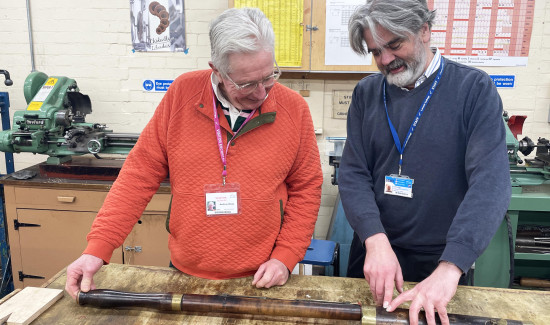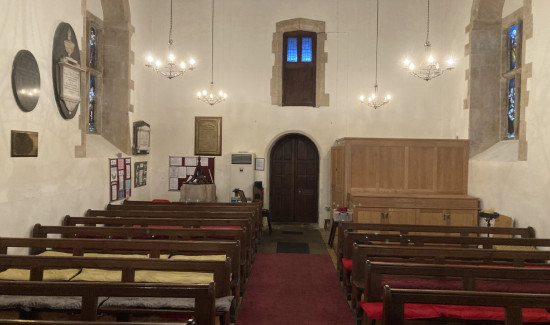
A very rare and famous bassoon from the 1700's was recently discovered in St Mary's Church, Carlton le Moorland, Lincolnshire, and has returned to its original birthplace in Newark some 250 years later.
St Mary's Church Warden, Andrew Alsop, discovered the old woodwind instrument in a chest in the church's vestry, under some 18th century church vestments.
Andrew said: "One day I was going through a very old chest in the vestry and I found this bassoon in three pieces and I didn't know where it had come from and nobody else was able to really tell me.
"One or two people had said that they had seen it on a wall in the church 50 or 60 years ago.
"So, I started making inquiries and luckily I made contact with Newark College who are going to help me. They have already identified the maker, and it was made in Newark 250 years ago!"
Patrick Abbott, Course Coordinator and Teacher on the BA (Hons) Musical Instrument Craft (Woodwind Making and Repair) degree programme at Newark College, said:
“Recently, I was very excited to be sent some photographs of a bassoon that was found in a local church.
“My initial research drew me to other instruments in existing museum collections that had very similar carving to the rather distinctive bell.
“It led me to believe quite quickly that this could be an instrument by a maker called Milhouse, who worked in Newark between 1763 and 1788, which is very exciting.
“I can now confirm, having seen the instrument in the flesh, that there are maker's marks on all the joints: Milhouse Newark. So, we can date this very accurately to between 1763 and 1788.
“I also find it really fascinating that we're running a specialist Musical Instruments Crafts (Woodwind Making and Repair) degree course here in Newark, and there's this history connecting us with this very famous maker who existed here such a long time ago.”
William Milhouse was a woodwind instrument maker, famous for his oboes and bassoons.
Milhouse was born and married in Newark-on-Trent, Nottinghamshire, and worked in Newark between 1763-1788 before moving to London where he set up shop first in Wardour Street and subsequently in Oxford Street from 1797 until his death in the late 1830s.
He had a reputation as one of the finest makers of woodwind instruments, and his business cards describe him as 'Manufacturer to their Royal Highnesses the Dukes of Kent & Cumberland'.
The BA (Hons) Musical Instrument Craft (Woodwind Making and Repair) at Newark College is a unique and specialist degree course designed to help produce skilled craftspeople who are able to repair a whole range of instruments in the woodwind family, from piccolo to saxophone.
The programme aims to introduce the precise skills needed which are taught in the College’s well-equipped workshop. The course has a making component which has traditionally focused on the manufacture of a Boehm system clarinet, and in more recent years students have created oboes, flutes, bassoons and soprano saxophones all from basic raw materials.
Research into the Milhouse Newark bassoon is still ongoing, led by Patrick Abbott.
Applications to join the course are still available for September 2024 entry. Visit the BA (Hons) Musical Instrument Craft (Woodwind Making and Repair) course page to find out more.

